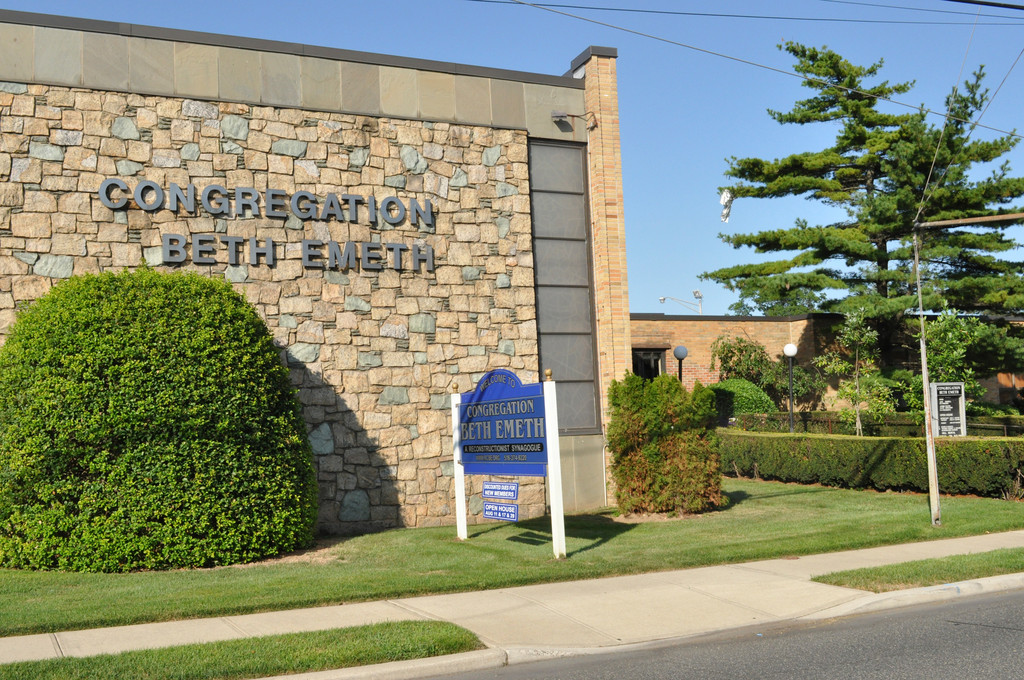Hewlett temple to be sold
Congregation Beth Emeth seeks 'more fitting home' nearby
Seeking to downsize from its current location at 36 Franklin Ave. in Hewlett, Congregation Beth Emeth, the only Reconstructionist Jewish synagogue on Long Island’s South Shore, is in the process of selling its building.
The congregation’s current membership is 100 families, down from a high of nearly 150 in the early 2000s, according to Rabbi Elliot Skiddell, its spiritual leader. “The building was built with a 400-family congregation in mind,” Skiddell said. “We don’t need that size building. That is the main reason we’re selling and moving forward into a more fitting home” — one they have yet to find.
Deciding to sell the Franklin Avenue building was not easy, according to Skiddell. It took two years, a series of meetings of the temple’s leadership and a few gatherings of involving the entire congregation. “At the end of the day, the facts and figures showed that the best decision was to sell the building and look for a new home,” he said.
The synagogue has 15,400 square feet of space. Herb Ruben, one of four members of the temple’s leadership council, said they are looking for a building in the 5,000- to 7,000-square-foot range. Both Skiddell and Ruben said that they want to remain in Hewlett or a community close by, such as Woodmere, East Rockaway, Lynbrook or Far Rockaway. “The congregation is what I call a destination synagogue,” Skiddell said. “We have members in Howard Beach, Freeport, North Merrick, other parts of Long Island and the boroughs close to Long Island. We would like to find a good home in a location where members can reach us easily.”
Paperwork for a potential sale to a church organization was submitted to the state attorney general’s office last month, as required by law. The process takes three to four months, Ruben said.
The synagogue was originally established as the Hewlett Temple, a Conservative congregation, in 1960. Its membership declined to 48 families in the 1990s, according to Ruben. In order to survive and attract new members, the temple became affiliated with the Reconstructionist movement in 1994, and its membership grew to 148 families in the early 2000s before falling off once more.






